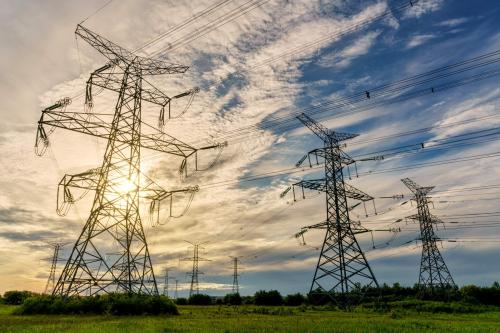

1:00 am IST - 2:30 am IST
Past Event
Content from the Brookings Institution India Center is now archived. After seven years of an impactful partnership, as of September 11, 2020, Brookings India is now the Centre for Social and Economic Progress, an independent public policy institution based in India.
Strengthening local communities and healthcare post-COVID-19
Dr. Rajesh Chadha opened the discussion by briefly introducing the main points to be explored by the panel – scope and merit of DMF funds to address critical issues of income, healthcare and livelihood; administrative and planning issues with respect to DMF implementation; and accountability questions and engagement of local communities.
He gave a brief background of the DMF funds which was supplemented by Dr. Banerjee. DMF funds were inaugurated in 2015 as a benefit-sharing mechanism. They have now been linked to the Pradhan Mantri Khanij Kshetra Kalyan Yojana (PMKKKY). Until March 2020, ₹ 38,000 crores have been collected under these funds with the highest collection by top mining states like Odisha, Jharkhand, Chhattisgarh, Rajasthan and Madhya Pradesh. Of the total collection,
₹ 14,000 crores have been used by the states. Dr. Banerjee also pointed out that some major mining states like Jharkhand show zero expenditure from DMF funds on livelihood and skill development.
Income, healthcare, and livelihood
Dr. Banerjee, in her opening remarks, mentioned about the migrant crisis and stressed the need for the states and districts to provide job opportunities to their local population. She said that the focus should be to tap into the existing but underutilised institutions and resources such as DMF funds. Adding to this aspect of the discussion, Shri Sanjeev Verma explained the extent of utilisation of DMF funds for the Covid-19 crisis. Up to 30% of the DMF funds can be used towards managing the crisis. He mentioned that some of the states have capped these DMF funds as a contingency fund which will be utilised according to the number of cases.
Shri Verma pointed out that Covid-19 is a long-term issue and that “we have to realise that there is a life beyond COVID, and the focus should be on developing healthcare infrastructure.” He also suggested some potential ideas to augment the healthcare infrastructure. Keeping in mind the current COVID crisis, he pointed out that building more testing facilities, capacity building of staff, and developing institutions for diagnostic sciences are the most critical areas of development and focus. He also suggested that “while waiting for a vaccine, we have to start preparing a plan for its distribution.” He suggested that it could be incorporated into the census data collection that is due to happen in 2021.
Dr. Banerjee agreed to Shri Verma’s take on the healthcare system and responded that “Covid-19 is just a trigger for all of us to realise that there is a crisis in the healthcare systems at the local levels.” She emphasised that the discussion was not about DMF funds helping specifically with the COVID crisis, instead about strengthening the local economy and healthcare to withstand future shocks.
DMF implementation: Administration, accountability and planning
The implementation structure of DMF funds was discussed during the webinar. Shri Arun Kumar explained the movement of funds and the reason behind the slow implementation of these funds. He said that to increase the fund usage, it has to be a state specific initiative. He suggested that in zero expenditure states, local initiatives by the public should be taken to bring more accountability into the system through audit reports, etc.
Dr. Banerjee stated in agreement that instead of relying on the centre to fix the fund use and implementation of DMF funds, actual engagement is required at the state and district levels. She pointed out that India has a very good decentralised system in theory but not in practice and these issues give an opportunity to build on the strengths of decentralised governance mechanisms.
Keonjhar: An ideal example for DMF implementation?
Shri Ashish Thakare provided insight into the usage of DMF funds in Keonjhar district, Odisha. He highlighted the importance of DMF funds to battle Covid-19 in the district. He also explained the long-term gains of a benefit-sharing fund on healthcare, income and livelihood. He stressed that they are “augmenting the human resources, augmenting the equipment and infrastructure and of course the physical buildings.” While mentioning the livelihood programs, he also stated that “livelihood cannot be imposed on communities; we need to understand what these communities require and what changes they would like to see and then plan accordingly.”
Concluding remarks
Dr. Chadha said the discussion had been very fruitful and that all of us are keen to help the people who are affected and that the DMF funds should be put to the best use. He thanked the panelists, the Brookings India team, and the attendees.

Robin Brooks
April 11, 2024

March 6, 2024

Jonathan Wilkinson
March 6, 2024